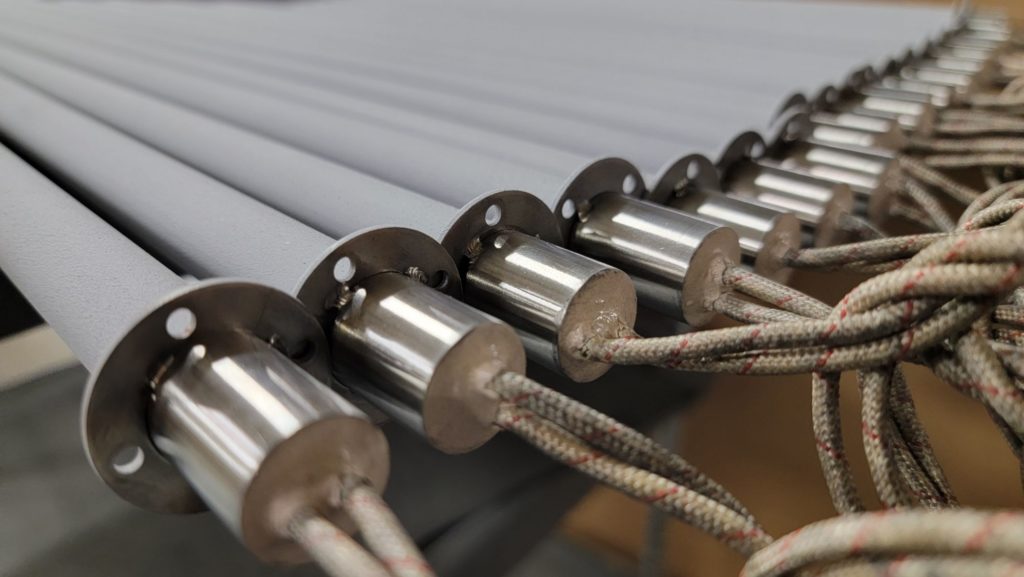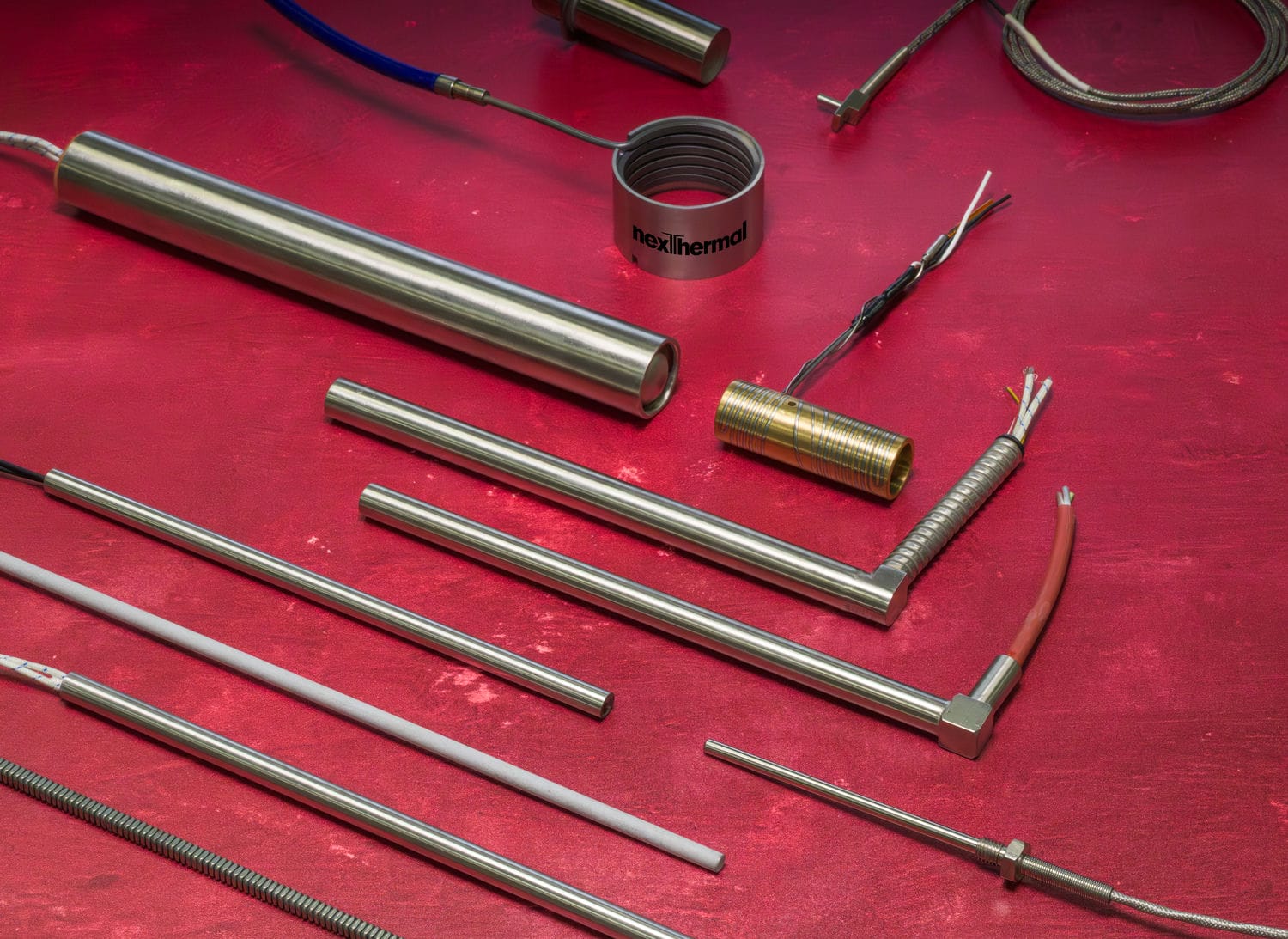
Tubular heaters and cartridge heaters are very much alike, but they each have a very different purpose.
What Are Cartridge Heaters?
Cartridge heaters are a type of industrial heater that come in different diameters and lengths. Cartridge heaters give focused and accurate heating. Most cartridge heaters are straight cylindrical tubes with sizes that are meant to fit into pre-drilled holes. Cartridge heaters come in a variety of power and voltage levels that can be tailored to suit specific requirements based on the application. Cartridge heaters are available in low, medium, and high-watt densities. They can tolerate operating temperatures of up to 1,400º Fahrenheit.
Cartridge heaters are used to heat metal molds, gasses, liquids, hot stamping applications, medical equipment, plastic molds, dies, etc.
What are Tubular Heaters?
Tubular heaters are normally made up of fine coil nichrome resistance wire that is located in a metallic tube and insulated by magnesium oxide powder. The elements are then drawn through a die to compress the powder and maximize heat transmission. These elements work on one of three heating principles: conduction, convection, or radiation. They are the most versatile of all electric heating elements widely used in many heating applications. such as food service equipment, industrial ovens, hot tubs, incubators, freezers and basically any application requiring electric heat.
Tubular Heaters vs Cartridge Heaters
Cartridge heaters and tubular heaters both include a coil of nichrome wire within, which is separated from the tube by magnesite or MgO material. The resistive element is terminated at the tube’s end to provide an external connection point. The cartridge heater uses flexible electrical conductors to provide effective connections. Tubular heaters, on the other hand, generally feature connections with threaded terminals.
One of the main differences between cartridge heaters and tubular heaters is that tubular heaters can be bent without any complex machining.
into almost any shape, unlike a cartridge heater. Cartridge heaters are typically cylindrical or rectangular in shape, with no bends or curves. Tubular heaters can be formed with a variety of lengths, diameters and sheath materials.
Cartridge heaters provide direct heat, as they are inserted into holes within the application. Tubular heaters, however, are clipped to contraptions such as tanks and vessels to help with the transfer of liquids and may even be immersed directly into the liquids. Depending on the application, they may be placed into ducts for heating air and gas or pressed into milled channels.
Tubular heaters are known for being both flexible and rigid and they come in various lengths and diameters. Cartridge heaters are available as straight heaters with a range of diameters and lengths to accommodate individual requirements.
Both cartridge and tubular heaters can be used in immersion applications. Regardless of which heater is used, it is important to select the right potting material to prevent liquid from entering the heater.











